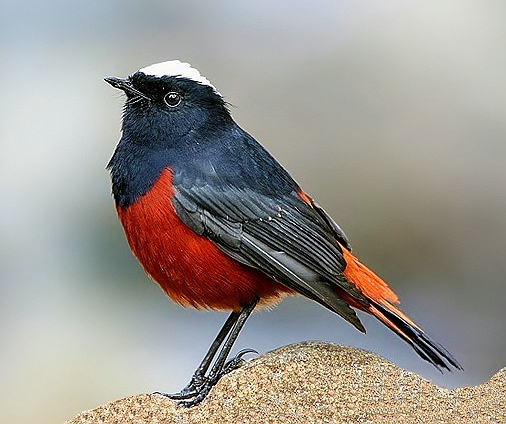 |
| Photo by Yeshev Dorji (Oriental Bird Images) |
Common name:
white-capped water-redstart (en); rabirruivo-de-coroa-branca (pt); torrentaire à calotte blanche (fr); colirrojo de capa blanca (es); weißkopfschmätzer (de)
Taxonomy:
Order Passeriformes
Family Muscicapidae
Range:
This species is found in central Asia, from eastern Afghanistan and Kyrgyzstan, through the Himalayas and into central and southern China, and northern Myanmar, Laos and Vietnam.
Size:
These birds are 19 cm long and weigh 24-42 g.
Habitat:
The white-capped water-redstart is found along rocky rivers, streams and waterfalls and in high altitude grasslands. They are only found in mountainous areas, at altitudes of 1.800-5.100 m.
Diet:
They feed primarily on insects, namely Ephemeroptera, Diptera, Coleoptera and Hymenoptera, but also take spiders and molluscs and also berries and grass seeds during autumn and winter.
Breeding:
White-capped water-redstarts breed in May-August. The nest is a bulky cup made of grass, rootlets and moss, bound with mud and lined with rootlets, ferns and animal hair. The nest is placed in a hole, usually in a rock, tree, bank or wall, or under stones or tree roots. There the female lays 3-5 pale blue or blue-green eggs with darker markings, which she incubates alone. There is no information regarding the incubation and fledgling periods, but the young continue to be fed by adults for 5-6 days after fledging.
Conservation:
IUCN status – LC (Least Concern)
This species has a very large breeding range and is described as common to uncommon. The population is suspected to be stable in the absence of evidence for any declines or substantial threats.







